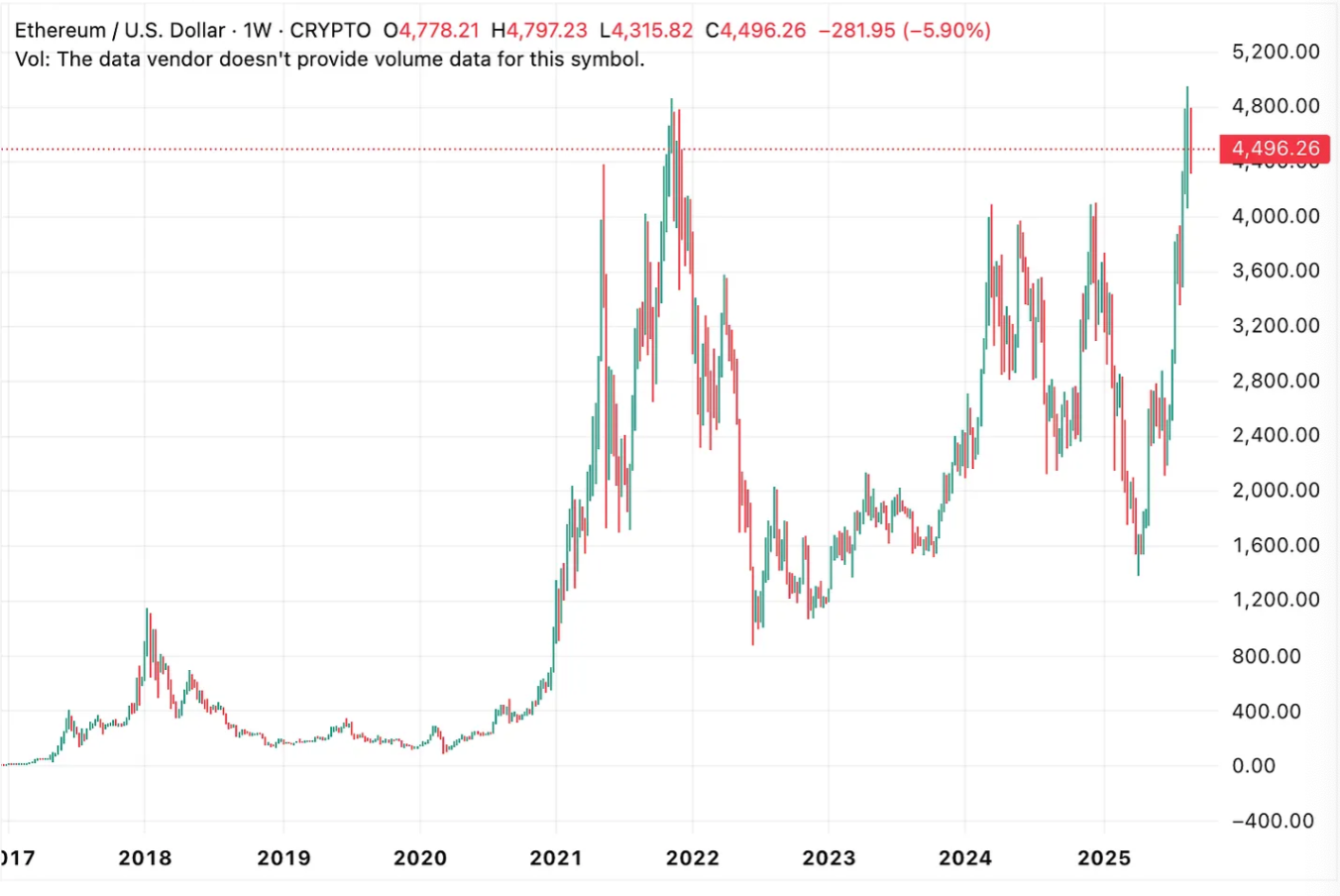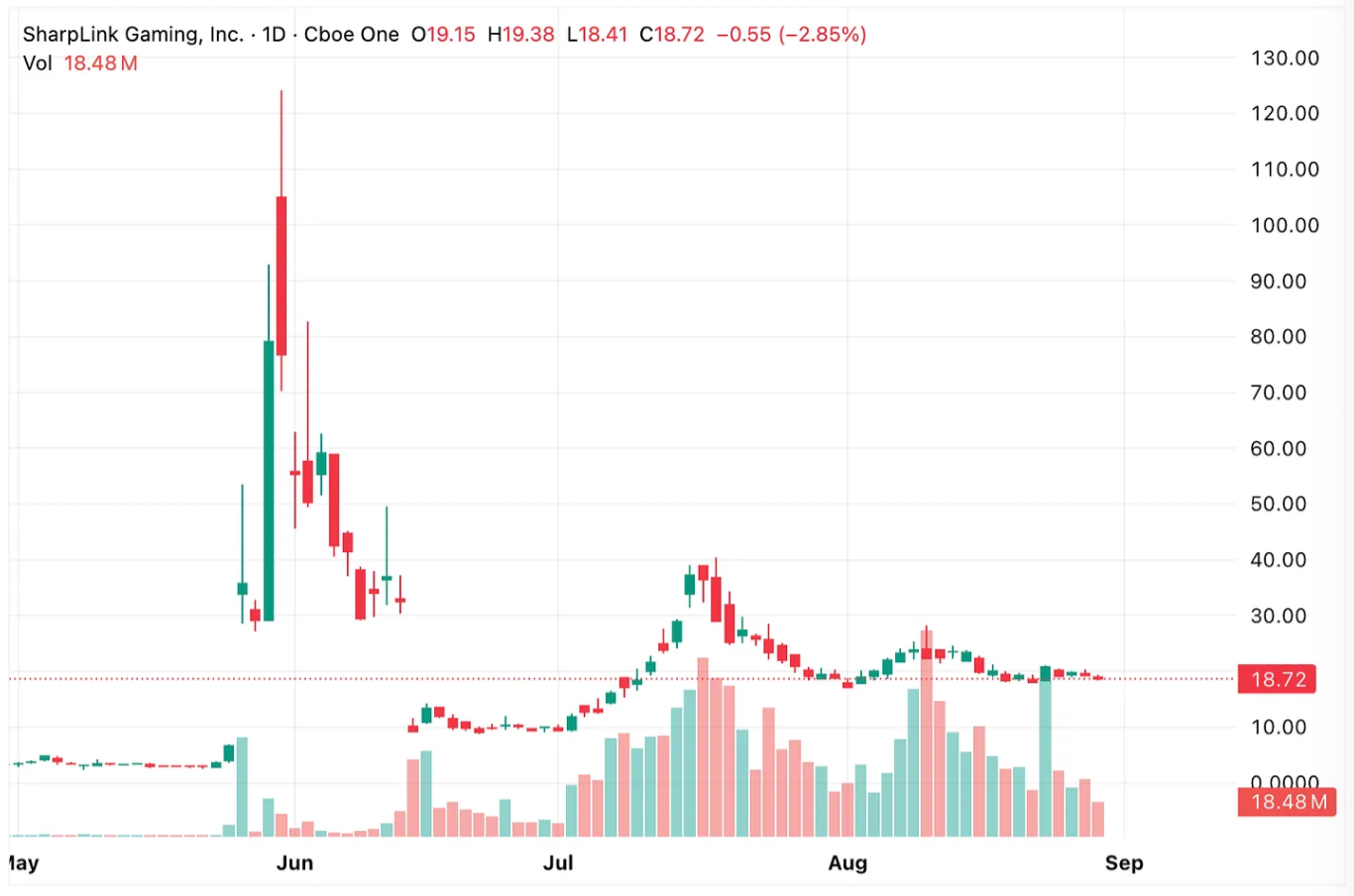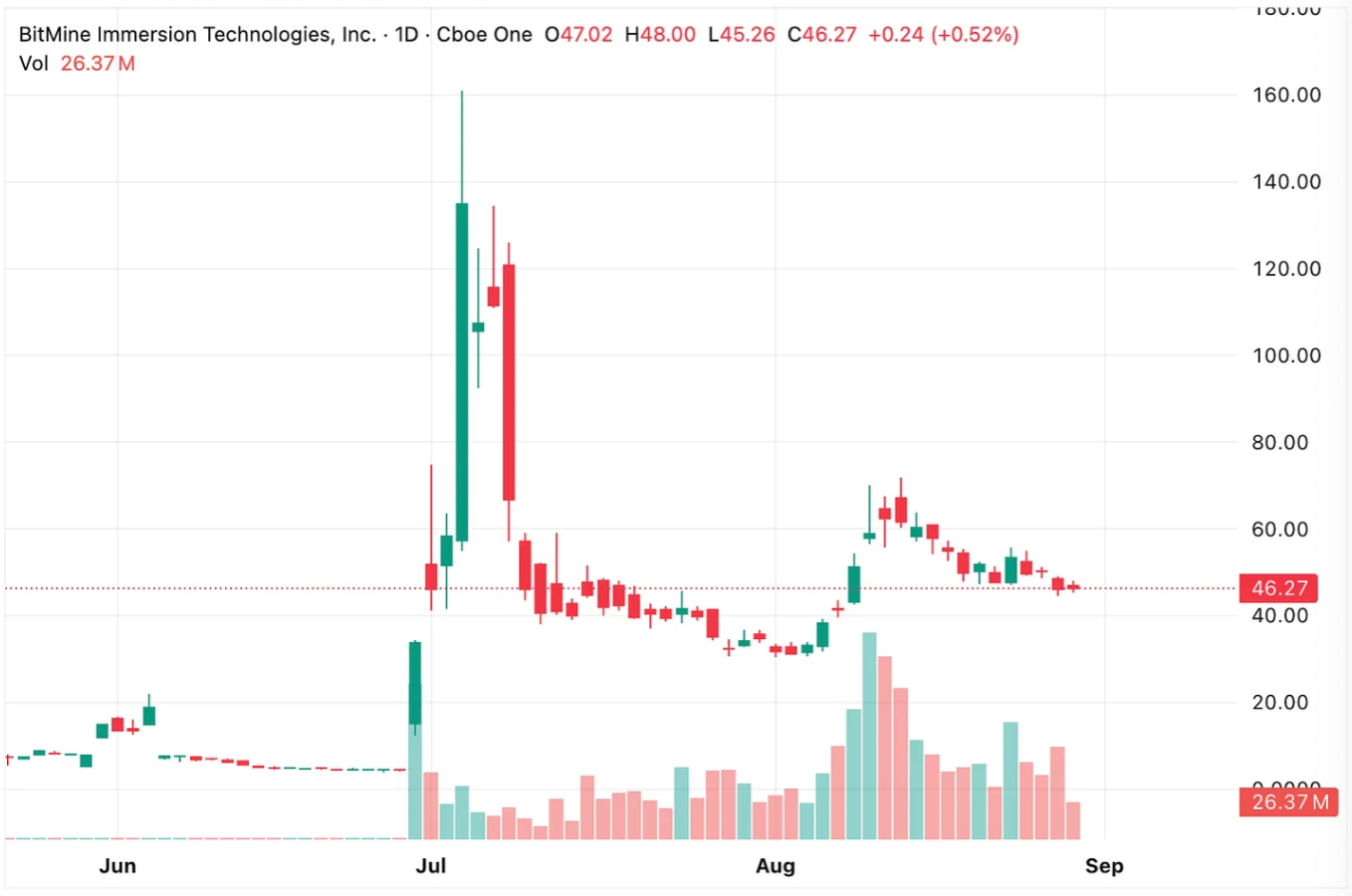Ethereum’s Treasury Wave: Why It’s Only Just Getting Started
Author
Abbas A.
Date Published

A deep dive into how ETH treasury firms and ETFs are rapidly absorbing supply, why their staking advantage matters, and what it could mean for Ethereum’s price and valuations.
Since the start of June, Ethereum treasury companies – firms that hold ETH directly on their balance sheets, a bit like how some companies hold Bitcoin as a reserve asset – have scooped up around 2.6% of all ETH in circulation. Add to that the inflows from newly launched Ethereum ETFs, and together they’ve absorbed a remarkable 4.9% of the circulating supply. To put that into context, the fastest-ever accumulation period for Bitcoin was around 2% in a single quarter (Q4 2024). Ethereum has more than doubled that pace in less than three months.
It’s no surprise then that ETH pushed to a fresh all-time high of $4,955 on Sunday the 24th.

Why the buying matters
What’s striking is that this looks more like the beginning than the end of the trend. Treasury companies are still early in their accumulation cycle. Some analysts expect these firms could eventually hold 10% of all ETH in circulation. To illustrate, Bitmine (BMNR) alone has publicly stated a target of owning 5% of the supply. If they get there – and with others following suit – hitting that 10% mark looks increasingly plausible. With 7.4% of the supply still up for grabs, the buying pressure could continue to drive ETH higher into year-end. That’s why the recent two-day pullback might actually be seen as a strong entry point rather than a warning sign.
Valuations of ETH treasury companies
On the equity side, the listed ETH treasury companies are starting to “normalise” in valuation. Put simply, their market capitalisation (what investors value the company at) is moving closer to the fair value of the assets they hold – in this case, their ETH reserves.
At the moment, the NAV multiples (the ratio of market cap to net asset value) for SBET and BMNR – the two most established ETH treasuries – have dropped not only from earlier highs but also below the level of MicroStrategy (MSTR), which remains the best-known Bitcoin treasury company.


For context:
- NAV multiple: if a company holds $1bn of ETH but the market values it at $1.2bn, the multiple is 1.2x. If the market cap drops to $900m, the multiple is 0.9x.
- Why this matters: investors usually assign a premium when they believe the company can generate extra returns on top of its holdings, and a discount when they’re sceptical.
The staking advantage
Here’s the kicker: ETH treasury companies earn a 3% staking yield just by locking up their ETH to help secure the network. This creates a built-in cash flow, unlike Bitcoin holdings which just sit idle. For that reason alone, it doesn’t make much sense for ETH treasuries to trade at a discount compared with MSTR, which earns no such yield.
Adding to this, SBET’s announcement on Friday 22nd that it will repurchase shares if its NAV multiple drops below 1.0 effectively creates a safety net for investors. In plain terms: if the market values SBET’s ETH holdings too cheaply, the company itself will step in and buy back shares, pushing the multiple back up. That should set a “hard floor” for valuations going forward.
The bigger picture
Taken together – the pace of ETH accumulation, the likelihood of treasury firms growing their holdings towards 10% of the supply, and the staking yield advantage – the case for Ethereum looks strong. If anything, the recent dip could be setting the stage for the next leg higher.